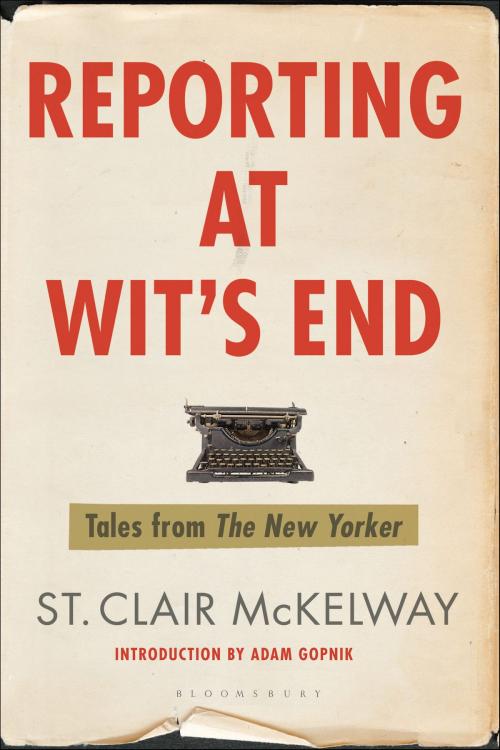Reporting at Wit's End
Tales from The New Yorker
Nonfiction, Reference & Language, Language Arts, Journalism, Fiction & Literature, Essays & Letters, Essays, Anthologies| Author: | St. Clair McKelway | ISBN: | 9781608191239 |
| Publisher: | Bloomsbury Publishing | Publication: | July 22, 2010 |
| Imprint: | Bloomsbury USA | Language: | English |
| Author: | St. Clair McKelway |
| ISBN: | 9781608191239 |
| Publisher: | Bloomsbury Publishing |
| Publication: | July 22, 2010 |
| Imprint: | Bloomsbury USA |
| Language: | English |
"Why does A. J. Liebling remain a vibrant role model for writers while the superb, prolific St. Clair McKelway has been sorely forgotten?" James Wolcott asked this question in a recent review of the Complete New Yorker on DVD. Anyone who has read a single paragraph of McKelway's work would struggle to provide an answer.
His articles for the New Yorker were defined by their clean language and incomporable wit, by his love of New York's rough edges and his affection for the working man (whether that work was come by honestly or not). Like Joseph Mitchell and A. J. Liebling, McKelway combined the unflagging curiosity of a great reporter with the narrative flair of a master storyteller. William Shawn, the magazine's long-time editor, described him as a writer with the "lightest of light touches." His style is so striking, Shawn went on to say, that "it was too odd to be imitated."
The pieces collected here are drawn from two of McKelway's books--True Tales from the Annals of Crime and Rascality (1951*)* and The Big Little Man from Brooklyn (1969). His subjects are the small players who in their particulars defined life in New York during the 36 years McKelway wrote: the junkmen, boxing cornermen, counterfeiters, con artists, fire marshals, priests, and beat cops and detectives. The "rascals."
An amazing portrait of a long forgotten New York by the reporter who helped establish and utterly defined New Yorker "fact writing," Untitled Collection is long overduecelebration of a truly gifted writer.
"Why does A. J. Liebling remain a vibrant role model for writers while the superb, prolific St. Clair McKelway has been sorely forgotten?" James Wolcott asked this question in a recent review of the Complete New Yorker on DVD. Anyone who has read a single paragraph of McKelway's work would struggle to provide an answer.
His articles for the New Yorker were defined by their clean language and incomporable wit, by his love of New York's rough edges and his affection for the working man (whether that work was come by honestly or not). Like Joseph Mitchell and A. J. Liebling, McKelway combined the unflagging curiosity of a great reporter with the narrative flair of a master storyteller. William Shawn, the magazine's long-time editor, described him as a writer with the "lightest of light touches." His style is so striking, Shawn went on to say, that "it was too odd to be imitated."
The pieces collected here are drawn from two of McKelway's books--True Tales from the Annals of Crime and Rascality (1951*)* and The Big Little Man from Brooklyn (1969). His subjects are the small players who in their particulars defined life in New York during the 36 years McKelway wrote: the junkmen, boxing cornermen, counterfeiters, con artists, fire marshals, priests, and beat cops and detectives. The "rascals."
An amazing portrait of a long forgotten New York by the reporter who helped establish and utterly defined New Yorker "fact writing," Untitled Collection is long overduecelebration of a truly gifted writer.















